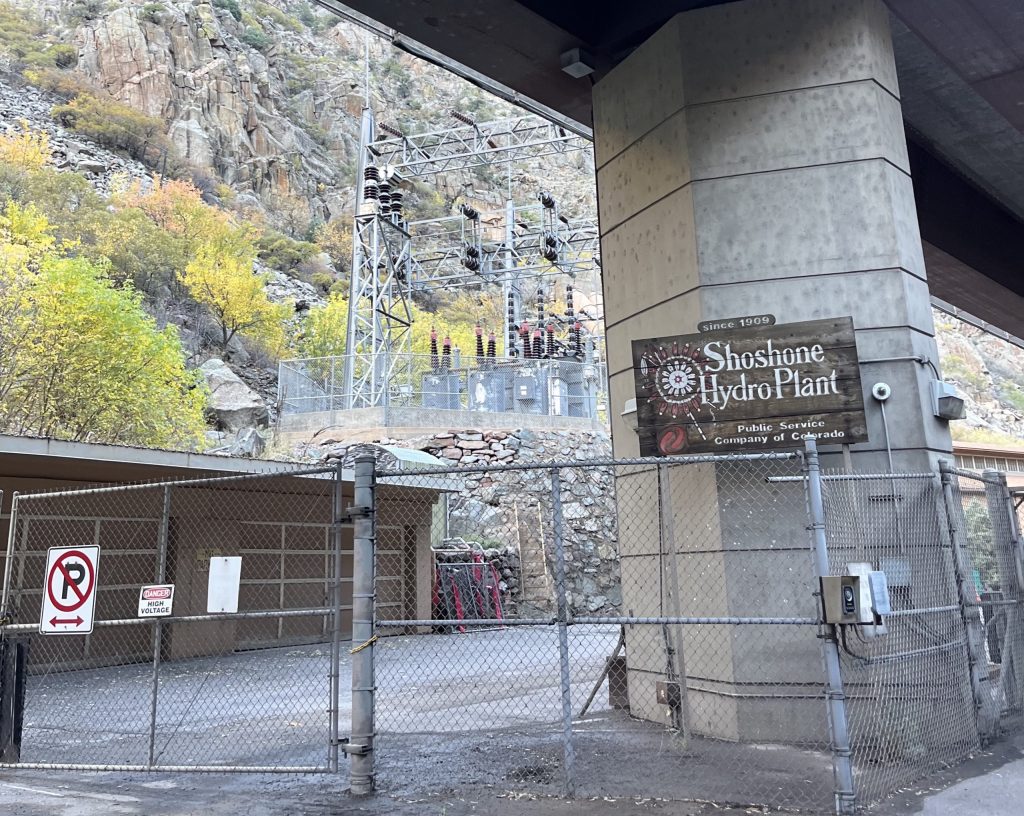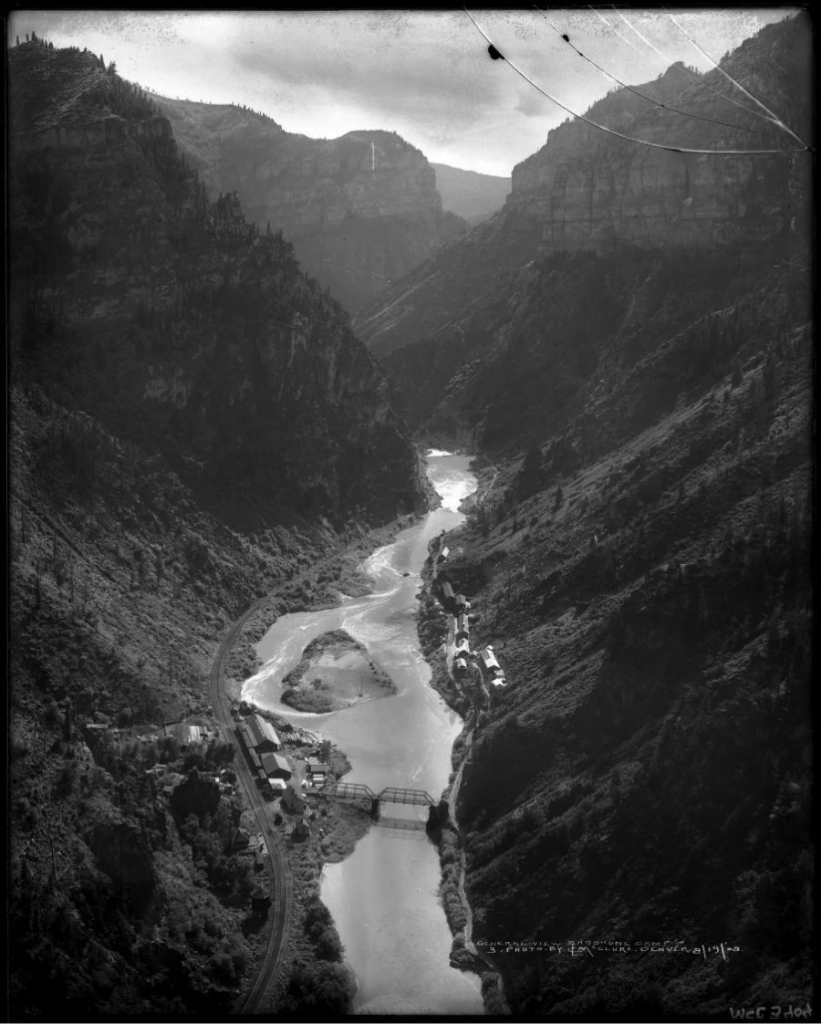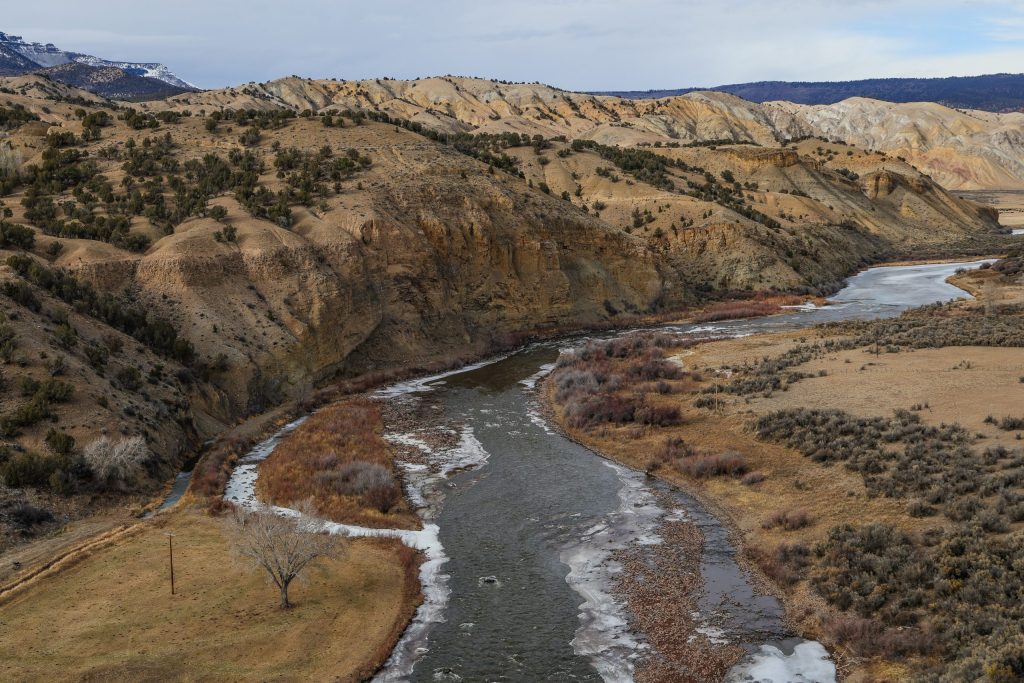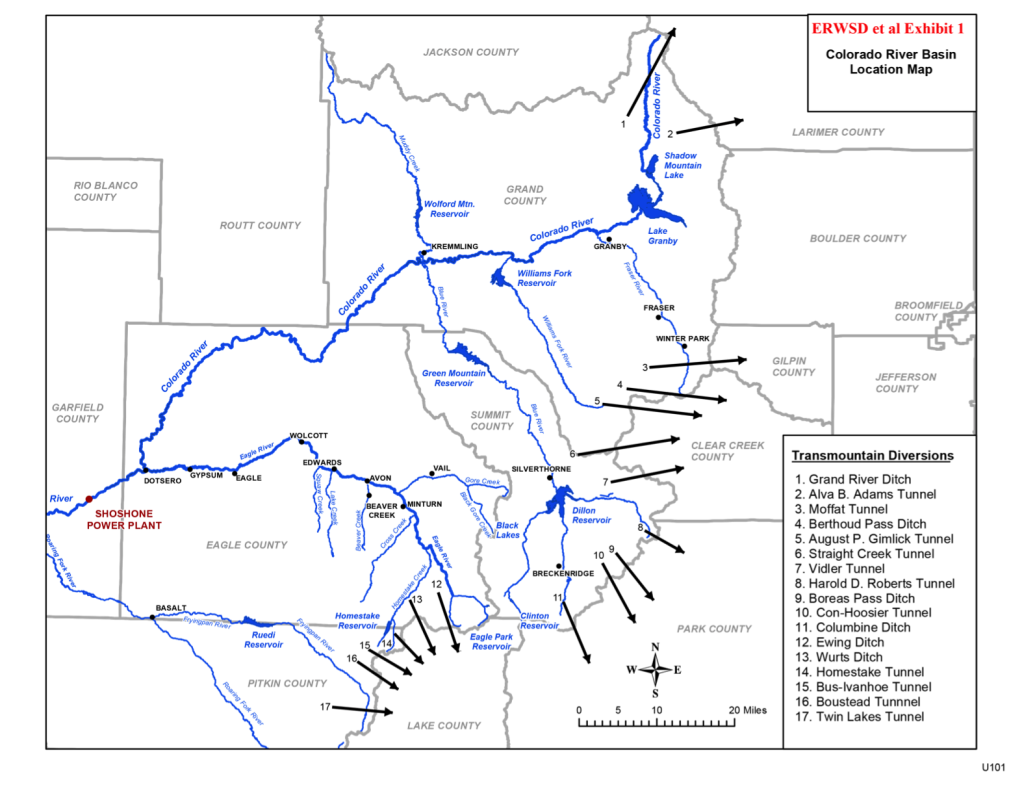Negotiations to continue beyond 14-hour hearing over one of the Colorado River’s oldest water rights
The Colorado Water Conservation Board heard arguments from East and West Slope entities on whether the Shoshone water rights can be used for the environment

Ali Longwell/Vail Daily
The battle over one of the Colorado River’s oldest, non-consumptive water rights continued this week during a 14-hour Colorado Water Conservation Board hearing over whether the rights could be used for the environment.
The Colorado River District is seeking to acquire the Shoshone water rights — tied to a hydropower plant on the Colorado River in Glenwood Canyon — from Xcel Energy for $99 million. The River District, a governmental entity representing 15 Western Slope counties, is proposing to add an instream flow agreement to the acquisition, which would allow a certain amount of water to remain in the river for environmental benefits.
While the state’s water board — the only entity that can hold an instream flow water right in Colorado — was set to decide on the proposal this week, this was pushed to November after the parties agreed to take more time to reach a consensus on the proposal.
“The exercise of the Shoshone water rights impacts almost every Coloradan,” said Davis Wert, an attorney speaking on behalf of Northern Water. “This acquisition is a weighty responsibility and requires careful consideration to ensure it is done right.”
Northern Water is contesting the instream flow agreement alongside Denver Water, Aurora Water and Colorado Springs Utilities. These providers rely on transmountain diversions from the Colorado River basin to supply water to their customers.
The Front Range rights, however, are junior to the Shoshone nonconsumptive senior right, which is currently tied to the operation of the hydroelectric power plant. (All water diverted to the plant is returned to the Colorado River.) This means that whoever holds the Glenwood Canyon rights can place a call and require those junior to that right to cut back on water upstream.
“This Shoshone call is the single most important mechanism that keeps water flowing through our stretch of the river. It underpins the agriculture and recreation-based economies of Grand County and our neighboring West Slope Counties,” said Grand County Commissioner Merrit Linke. “Without that call, streamflows drop, and that harms our farms and ranches, fisheries, recreation, and specifically the aquatic environment.”
Linke was among those who spoke at this week’s hearing in support of the River District’s acquisition and instream flow agreement.
Thirty-two Western Slope entities — including utilities and municipalities — have pledged over $37 million toward the district’s acquisition. Another $20 million was pledged by the Colorado Water Conservation Board, $20 million from the River District’s board, and $40 million from the federal government, which was granted in the waning days of the Biden administration and frozen in the first days of the second Trump administration.
What the parties agreed on

John Carron of Hydros Consulting, who spoke on behalf of the River District, shared what Google AI wrote when prompted to write a haiku about the Shoshone water rights:
“Two thirsty divides
River flows through canyon walls
Tug of war ensured.”
While the hearing did include some back and forth, the entities west and east of the Continental Divide agreed on a few things during the hearing. First, adding an instream flow agreement to the Shoshone right will preserve and improve the natural environment. Second, they want to maintain the status quo on the Colorado River.
“(The instream flow proposal) is about the preservation of the current flow regime and the protection of the environment through that preservation,” said Andy Mueller, the River District’s general manager. “It is not about taking water from the opposers or locking up every last drop in the Colorado River. It’s about preserving what we have today and what we as a state should be proud of protecting.”
Michael Gustafson, in-house counsel for Colorado Springs Utilities, said the provider did not oppose the change of the senior Shoshone water right for instream flow purposes “to provide for permanency of the historic Shoshone call and maintenance of the historical Colorado River flow regime.
“Colorado Springs Utilities agrees that if managed appropriately, instream flow use of the senior Shoshone water rights will benefit both the environment and water users across the state,” Gustafson added.
This was echoed by the other contested parties in one way or another.
What the parties disagreed on

With that, however, there were a few sticking points during the hearing: who should manage the instream flow agreement — and have the authority to make decisions on Shoshone calls — and how much water has historically been granted as part of the right.
The historic flow regime has been highly contested between the parties, but will ultimately be determined in the Colorado Water Court proceedings that will conclude the River District’s acquisition.
Wert acknowledged this as the Front Range entities presented a historic use analysis that contrasted the preliminary analysis obtained by the River District.
“We are not providing this information to have the (Colorado Water Conservation Board) make a final determination of historic use. Everyone agrees that’s a Water Court matter that can be resolved in Water Court,” Wert said. “But the magnitude of difference between these analyses — which is on the order of hundreds of thousands of acre feet per year — highlights the importance of this acquisition and the need for the CWCB to get it right.”
This argument came into play with another contested matter during the hearing.
The Colorado River District’s proposed instream flow agreement includes a “co-management strategy,” while the contesting Front Range providers want the sole management authority to reside with the Colorado Water Conservation Board.
Wert said that the difference in the preliminary historic use analyses, “if anything, it shows the River District’s clear intent, if given the chance, to exercise the Shoshone rights in a manner that disadvantages transmountain diverters.”
Front Range providers argued that increasing instream flow amounts — above the historic flow regime — would require greater reservoir releases upstream, which would in turn result in lower storage and risk their ability to provide water.

“Colorado Springs Utilities has the same concerns as other Front Range parties about the provisions in the acquisition agreement that restrict the (Colorado Water Conservation Board’s) discretion to determine when to place a call under the Shoshone water rights, which arguably encroaches on the CWCB’s exclusive authority to hold and exercise in stream flow rights — an authority that is particularly critical given the magnitude and potential effects of this proposed acquisition,” Gustafson said.
Mueller called these claims fictional, arguing that the Water Court’s determination on historic use would protect all users, upstream and downstream, from any injury. The historic use analysis presented by the River district was merely a starting point, he said.
“There are multiple instances where we, the West Slope and the River District, have supported the relaxation of the Shoshone call during drought, where we’ve reoperated our own reservoirs and our own systems when one or more of the opponents’ systems are in trouble and they need some help,” Mueller said. “We’ve stepped up and figured out short-term collaborative efforts, creative solutions … so being painted as the party that’s not interested in collaborative solutions and not someone who’s responsible and considerate of the Front Range needs, that’s totally inaccurate.”
Mueller said that the co-management approach would allow the River District to collaboratively make decisions with the water board — something he called a “historic opportunity for partnership” between the entities putting up funds for the acquisition.
“From the West Slope’s perspective, the benefit of this partnership depends upon our sharing those management decisions with the CWCB,” Mueller said, adding that without it, “this opportunity won’t continue to carry forward.”
Mueller said that there were opportunities within the instream flow agreement to create “triggers” for when calls would be reduced and create a more defined picture of what collaboration looks like.
“We’re not very good at predicting the future based on past performance, so let’s make sure that we actually have that flexibility in our co-management,” he said.
Following the hearing, the Front Range and West Slope entities will now take their 60-day extension to find an agreement on the contested matters in the instream flow agreement before it comes back to the water board for a final decision in November.
“We are all working for the future of Colorado and our environment … our decisions that we make today will be long-lasting and outlive every single person in this room,” said Lorelei Cloud, director of the Colorado Water Conservation Board. “And so I’m asking as we move forward for everybody — board member or staff member or whoever else is in this room and listening to this meeting — be a good ancestor for our future generations so that they can look back and know that we did the best and we made the best decision for them and for Colorado.”


Support Local Journalism

Support Local Journalism
As a Summit Daily News reader, you make our work possible.
Summit Daily is embarking on a multiyear project to digitize its archives going back to 1989 and make them available to the public in partnership with the Colorado Historic Newspapers Collection. The full project is expected to cost about $165,000. All donations made in 2023 will go directly toward this project.
Every contribution, no matter the size, will make a difference.










